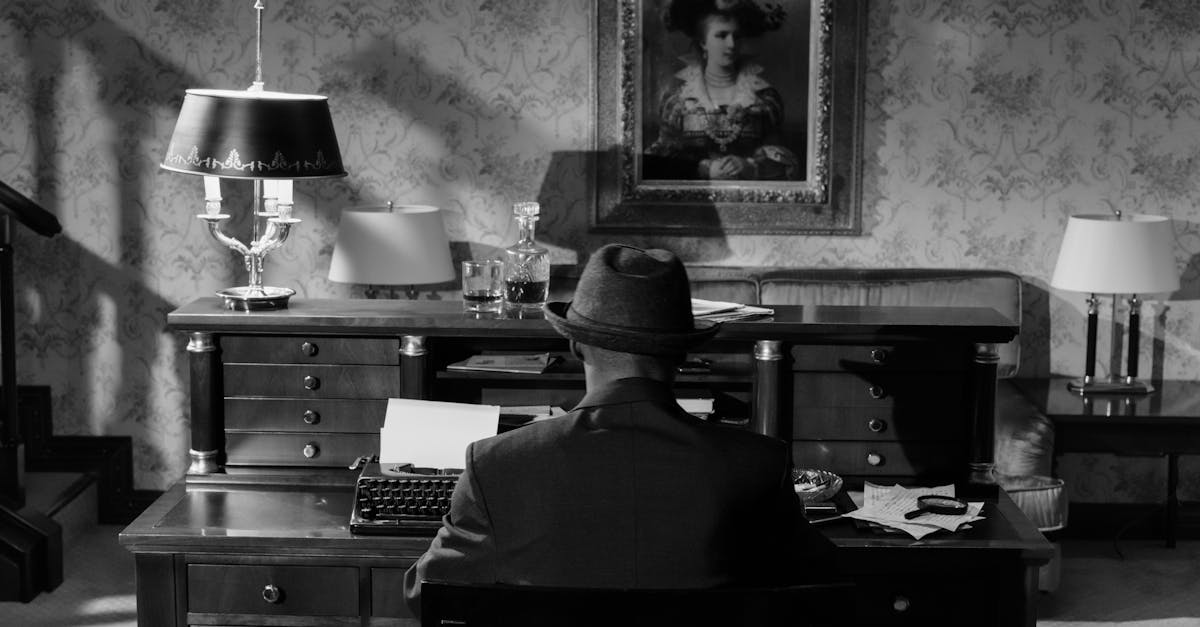Best Movies Based On True Stories
Introduction
Movies based on true stories hold a special place in cinematic history, offering audiences more than just entertainment—they provide windows into extraordinary human experiences. These films resonate deeply because they showcase real struggles, triumphs, and pivotal moments that have shaped individuals and societies. Unlike purely fictional narratives, fact-based films carry an added weight of authenticity, making their emotional impact even more profound.
The best true-story movies do more than recount events—they humanize history. Through masterful storytelling and compelling performances, they transform statistics and headlines into intimate, visceral experiences. Viewers don't just learn about historical figures or events; they feel their journeys. This emotional connection is why films like Schindler's List and 12 Years a Slave remain culturally significant decades after their release.
In this expanded exploration, we'll examine why these films matter, how they balance fact with creative interpretation, and why certain true stories continue to captivate audiences worldwide. From underdog triumphs to harrowing historical accounts, these movies prove that reality can be just as gripping—if not more so—than fiction.
Advertisement
The Pursuit of Happyness
One of the most heartwarming tales of resilience is portrayed in "The Pursuit of Happyness." Based on Chris Gardner's journey from homelessness to financial trader, it illustrates the triumph of perseverance. Will Smith's portrayal of Gardner offers a touching look at a father's unwavering dedication to his son. The film highlights societal challenges and the power of hope in overcoming adversity. Set against the backdrop of the 1980s, it delves into themes of poverty, ambition, and personal growth. Viewers come away inspired by Gardner’s relentless pursuit of success despite overwhelming odds.
The Pursuit of Happyness (2006) stands as one of cinema's most uplifting true stories, chronicling Chris Gardner's remarkable journey from homelessness to Wall Street success. What makes this film particularly powerful is its unflinching portrayal of poverty juxtaposed with unwavering hope.
Key Elements That Elevate the Story:
The Father-Son Dynamic: Will Smith's Oscar-nominated performance shines brightest in scenes with his real-life son Jaden Smith. Their bond transforms the film from a simple rags-to-riches tale into a deeply personal story about parental love and sacrifice.
Historical Context: Set in 1980s San Francisco, the film subtly critiques Reagan-era economic policies and the lack of social safety nets. Gardner's struggle to secure unpaid internships while homeless highlights systemic barriers.
Psychological Realism: Unlike many inspirational biopics, the film doesn't shy away from showing Gardner's moments of despair—sleeping in subway bathrooms, selling blood for money—making his eventual success feel earned rather than contrived.
This film's enduring popularity proves that audiences crave stories of authentic resilience, especially when they're rooted in truth.
Advertisement
Schindler's List
Steven Spielberg's Schindler's List (1993) redefined how historical atrocities could be portrayed on film. By focusing on one German industrialist who saved Jewish lives, the film personalizes the Holocaust's unimaginable scale.
Why This Film Remains Essential Viewing:
Moral Complexity: Oskar Schindler (Liam Neeson) isn't portrayed as a saint, but as a flawed man who grows into heroism. This nuanced characterization makes his actions feel more human and relatable.
Cinematic Techniques: Spielberg's decision to shoot in black-and-white (with the iconic girl in red) creates a documentary-like realism. The handheld camera work during liquidation scenes induces visceral discomfort.
Educational Impact: The film has been incorporated into school curricula worldwide. Survivors have noted its accuracy in depicting ghetto life and camp conditions, making it an invaluable teaching tool.
Decades later, Schindler's List remains the definitive cinematic account of the Holocaust because it balances historical fidelity with profound emotional storytelling.
Advertisement
12 Years a Slave
"12 Years a Slave" offers an unflinching look at the brutal reality of American slavery, retelling the story of Solomon Northup. This powerful film is based on Northup’s 1853 autobiography, highlighting the endurance and injustice faced by a free black man who was kidnapped and sold into slavery. Directed by Steve McQueen, it features intense performances, especially from Chiwetel Ejiofor as Northup. Through its harrowing emotional landscape, it serves as a reflection on freedom, identity, and resistance. It stands as a critical reminder of a dark period in history, urging viewers never to forget the past.
Steve McQueen's 12 Years a Slave (2013) broke new ground by presenting American slavery with unprecedented realism. Solomon Northup's memoir adaptation forces viewers to confront brutality without cinematic softening.
The Film's Historical and Artistic Significance:
Psychological Horror Approach: Unlike earlier slavery films that implied violence, McQueen shows extended scenes of torture (like the infamous whipping sequence) to communicate the institution's dehumanizing nature.
Performance Legacy: Chiwetel Ejiofor's silent screams and Lupita Nyong'o's Oscar-winning turn as Patsey created new standards for portraying historical trauma.
Modern Relevance: Released during the Black Lives Matter movement's rise, the film sparked renewed discussions about systemic racism's roots. Historians praised its accurate depiction of 1840s Louisiana plantation life.
By refusing to offer easy redemption or catharsis, 12 Years a Slave ensures viewers remember slavery as lived experience rather than abstract history.
Advertisement
A Beautiful Mind
"A Beautiful Mind" uncovers the life of John Nash, a brilliant mathematician struggling with schizophrenia. This film, delicately directed by Ron Howard, captures Nash's battle with mental illness and his eventual triumph of the human spirit. Russell Crowe's performance beautifully depicts Nash's genius and vulnerability, offering insight into the complexities of mental health. The narrative is interwoven with romance, academic rivalry, and personal courage. Beyond its captivating storytelling, it challenges societal perceptions of mental illness. With its profound exploration of mind and reality, the film leaves a lasting impression on its audience.
Ron Howard's A Beautiful Mind (2001) took creative liberties with John Nash's life but succeeded in bringing schizophrenia awareness to mainstream audiences.
What the Film Got Right (and Wrong):
Hallucination Visualization: The film brilliantly represents Nash's delusions by making viewers experience them firsthand. Only in the second act do we realize certain characters were never real.
Scientific Accuracy: While simplifying Nash's Nobel-winning game theory, the film captures academia's competitive pressures and mathematics' beauty.
Criticisms Addressed: The real Nash was more controversial (anti-Semitic remarks, estrangement from his son) than the film showed. However, its focus on mental health stigma sparked important dialogues.
Russell Crowe's physical transformation—from confident young scholar to medicated hospital patient—remains one of cinema's most respectful depictions of mental health struggles.

Tima Miroshnichenko/Pexels
Advertisement
The Theory of Everything
The dramatic journey of physicist Stephen Hawking comes to life in "The Theory of Everything." Chronicling Hawking's successes and struggles, the film unveils the genius behind his scientific discoveries. Eddie Redmayne's transformative performance portrays Hawking's descent into ALS, blending sadness with inspiration. Based on Jane Hawking's memoir, it focuses on their relationship, emphasizing love, perseverance, and intellect. Its narrative shines a light on human capacity to challenge fate and embrace life's unpredictability. Audiences walk away with a deeper understanding of Hawking's groundbreaking work and the support that fueled it.
The Theory of Everything (2014) distinguishes itself by focusing as much on Stephen Hawking's marriage as his physics breakthroughs.
Notable Aspects of This Biopic:
ALS Realism: Eddie Redmayne studied disabled patients for months to authentically portray Hawking's physical decline. The film doesn't romanticize his disability's daily challenges.
Jane's Perspective: Adapted from Jane Hawking's memoir, it shows the strain on caregivers—a rare angle for genius biopics. Their eventual divorce is handled with empathy for both parties.
Science Made Accessible: Visual metaphors (peas rolling in gravy to explain black holes) help general audiences grasp complex theories without oversimplifying.
This film reminds us that behind every great mind is a deeply human story of relationships and resilience
Advertisement
Rocketman
"Rocketman" is an electrifying journey into the life of the legendary musician Elton John. Unlike traditional biopics, it embraces a fantastical, musical approach, reflecting John's flamboyant personality. Taron Egerton's portrayal vividly captures John's rise to fame, struggles with identity, and eventual realization of self-worth. The film intricately balances John's personal battles with his extraordinary talent and artistry. Through its energetic musical numbers, it brings joy, sadness, and redemption, engaging viewers with every scene. True to its inspiration, "Rocketman" is not only visually stunning but also a testament to embracing one’s true self.
How It Innovated the Genre:
Jukebox Musical Format: Songs comment on the action rather than just perform it (e.g., "Rocket Man" during a suicide attempt scene).
Unflinching Honesty: Unlike Bohemian Rhapsody, it shows John's drug abuse, sexuality, and recovery without sanitization.
Therapeutic Framing: The rehab framing device presents John's life as self-reflection, making it more psychologically insightful than typical rise-fall-redemption arcs.
Taron Egerton's vocal performances (he sang live on set) and the surreal production design create a biographical experience as vibrant as John's music.
Advertisement
Hidden Figures
Hidden Figures (2016) performed the vital service of bringing marginalized pioneers to light.
Why This Story Mattered:
Triple Prejudice Overcome: The film highlights how Katherine Johnson (Taraji P. Henson), Dorothy Vaughan (Octavia Spencer), and Mary Jackson (Janelle Monáe) battled racism, sexism, and classism simultaneously.
STEM Inspiration: NASA reported increased interest from women and minorities after the film's release. Johnson received the Presidential Medal of Freedom months before her death at 101.
Historical Details: From segregated bathrooms to Vaughan teaching herself FORTRAN, these authentic touches educate viewers about 1960s workplace discrimination.
The film's box office success proved audiences hunger for untold histories, especially those celebrating Black excellence.
Advertisement
Bohemian Rhapsody
The 2018 film "Bohemian Rhapsody" chronicles the rise of the iconic band Queen and its lead singer, Freddie Mercury. Celebrating Mercury's extraordinary talent and individuality, it delves into the band's journey to worldwide fame. Rami Malek’s acclaimed performance highlights Mercury's charisma, challenges, and triumphs. Beyond the music, the film explores themes of identity, belonging, and perseverance. Capturing the essence of Queen's live performances, it immerses audiences in a world of musical innovation and passion. It’s an ode to an artist who defied the odds, and a reminder of the power of music to transcend boundaries.
While criticized for historical inaccuracies, Bohemian Rhapsody (2018) achieved something more valuable—it introduced Freddie Mercury's legacy to new generations.
Cultural Impact:
Live Aid Recreation: The 20-minute concert climax, painstakingly recreated, became the most accurate musical performance ever filmed.
Mainstreaming Queer History: Despite softening Mercury's AIDS timeline, the film brought his bisexual identity and queer relationships to multiplex audiences worldwide.
Music Rediscovery: Queen's streams increased 600% post-release, proving biopics can revive artistic legacies.
Rami Malek's embodiment of Mercury's physicality (especially his teeth and posture) created an uncanny channeling of the legend.
Advertisement
Conclusion
Movies based on true stories offer a unique lens through which we can view diverse human experiences. From surviving adversity to achieving monumental accomplishments, these stories reflect resilience, ingenuity, and spirit. Each film, with its distinct narrative and performance, leaves a lasting imprint on its audience. They serve as both entertainment and education, enriching our understanding of history and human behavior. As storytelling continues to evolve, these films remind us of the power of cinema to shape cultural and historical awareness.
These films demonstrate cinema's unique ability to memorialize real lives while entertaining mass audiences. The best fact-based movies:
Educate viewers about overlooked histories
Humanize figures reduced to textbook mentions
Inspire action or empathy through emotional connection
Preserve cultural memory as living history
As streaming platforms enable more niche stories to reach global audiences (e.g., Tick, Tick... Boom!, The Social Network), we're entering a golden age of biographical storytelling. What remains crucial is balancing artistic license with historical responsibility—a challenge these exemplary films all met with grace.
Ultimately, true-story movies matter because they remind us that ordinary people are capable of extraordinary things. In an age of misinformation, they provide authentic narratives that educate while they entertain, ensuring important stories live on for generations to come.
Advertisement








